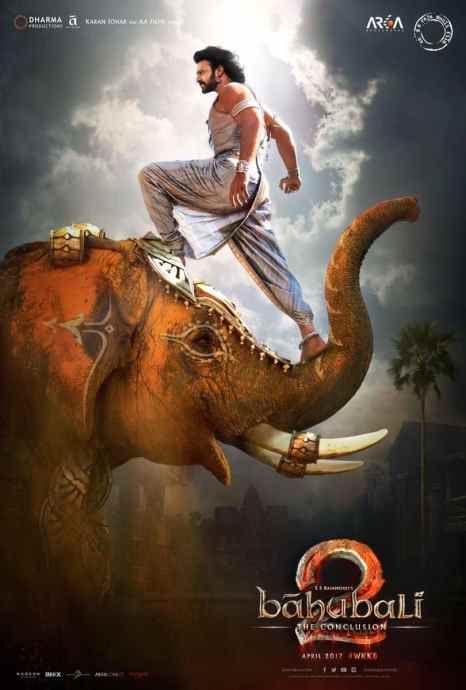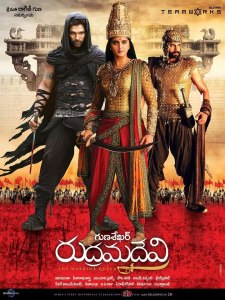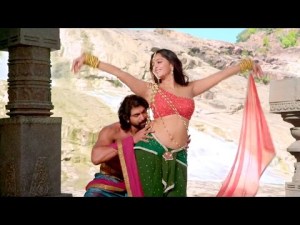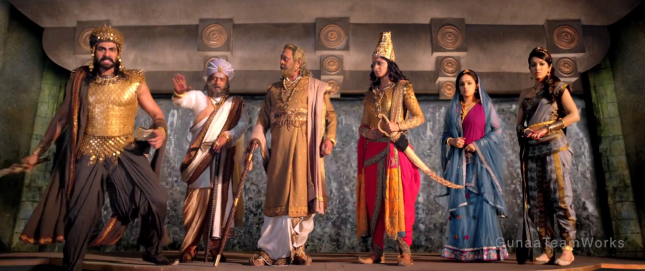Radha Jogendra (Rana Daggubati) narrates his story to a film crew as he awaits execution. He was once a simple money lender with a shrewd mind and a moral compass provided by his wife Radha (Kajal). After a couple of years of marriage Radha finally fell pregnant and the happy couple were over the moon. Sadly Radha lost the baby and her ability to conceive again after being attacked for accidentally infringing on the imaginary rights of the village leader’s wife. Yes, I know. Jogendra decides if he was the village head nobody would insult Radha again. So he schemes his way into the role. Then he eyes off the MLA position. Then a ministry. Then the CM gig. He always justifies his ambition as his means of giving Radha the best in life, but he is playing the game for the sake of power too. Can he keep outwitting his opponents? Where will he draw the line? And what does Radha make of it all?
Teja’s “Nene Raju Nene Mantri” is set in the murky world of politics but has all the flair and improbability of a cowboy film. It is great fun if you can ignore the death toll, and I always like a decent comeuppance.
Jogendra (Rana) adores his wife, but everyone else is expendable or interchangeable. He is deceptively simple looking, but his mind is subtle and calculating. Rana dominates his scenes and not just because he is twice the size of anyone else in the film. He is fully at home as the morally dubious but highly effective Jogendra and delivers his one-liners and proverbs with great relish. The action scenes are often brutal but then he switches to a convincing warmth and playfulness in his scenes with Kajal. There’s more complexity to Jogendra than I was expecting, and a lot more of the mass hero hijinks than I expected too. I laughed a lot at Jogendra’s amazing aptitude for killing, and his ability to stay on task.
The wardrobe team came up with a good look for Rana. Well, once I got over my confusion at seeing him in a shirt. There’s lots of monochromatic linens, a slightly modernised traditional look, and a fairly subtle way to emphasise his physique without it looking like his clothes were painted on. What else…Oh yes, there is a hulk-out shirt ripping moment, just to prove the gym sessions haven’t ended.
Radha (Kajal) is on the surface too saintly. But I really liked her chemistry with Rana, and some of her less sweet moments saved Radha for me. I loved when she fired up and told Jogendra she’d forgive so many of his mistakes (like shagging Devika Rani) but not the thing he just said. Or when he chided her for acting childish and she said it was because they didn’t have a child, and they both looked stricken. I didn’t like that everyone except Jogendra saw Radha’s value relative to her having a baby. She had no purpose or context in the script other than “wife”, so I was impressed with Kajal for bringing a bit more to the table. She showed Radha’s growing discomfort with her husband’s actions and her inner conflict because she knew he did it all for her. The wardrobe team dressed her in beautiful sarees that increased in opulence but always suited Radha, and Kajal looked comfortable in her skin. However. Radha was the perfect wife who would sacrifice anything for husband but that final sacrifice was just DUMB. The method struck me as quite improbable. Having said that, I still felt intensely sad when the cortege visited surrounding villages.
Devika Rani (Catherine Tresa) is a badly dressed avatar of media whoredom. Her painfully high silver wedge sandals and the almost there skirts were hideous. I guess the wardrobe team can’t love all their cast members equally. While it is good that Devika Rani was shown to be a confident woman I was concerned that none of her social media strategies were sound. Never hire anyone who says their plan is to send everything viral. And her character made little sense. But it does speak to the thinking around campaigning and media manipulation, with clicktivism and slacktivism getting a passing nod even if I am not sure that is what Teja was aiming at. Her major achievement in the film might have been that she had zero chemistry with Rana. What was probably supposed to be a titillating scene was just awkward and cold, with Rana looking like he was resigned to an invasive medical procedure. Catherine has some convincing moments in solo scenes, but as soon as Rana or Kajal shows up her lack of acting skill is all too evident.
The villains are unfortunately quite familiar types from everyday life. The cop who takes bribes (Ajay), the gangster turned politician (Padeep Rawat), career politicians with no objective beyond lining their pockets (Tanikella Bharani, Ashutosh Rana, Posani Krishna Murali). All of these performances were solid, and there was some genuine menace and just nastiness in their interactions with Jogendra. Rana looked like he was having the time of his life threatening Ajay. Ashutosh Rana’s character didn’t know if he was coming or going sometimes, with a wry use of proverbs to explain how proverb-spouting Jogendra could beat him. I quite liked the one that went “if the cat is blind a mouse can hit it with a stick”. A convenient morality permeates the film. If Jogendra kills someone (or a hundred someones), don’t take it to heart. They were all bad so he was doing a good thing. Well, except for one. Navdeep wasn’t given much to do as Shiva but he managed to make an impression as one of the only people who held Jogendra morally accountable.
Anoop Ruben’s soundtrack tends towards the anthemic, which suits the purposeful journey Jogendra is on. They didn’t make Kajal and Rana dance which is also a blessing. There was a bit of convulsive twitching in one song but then lots of walking (him) and a bit of frolicking (her). Good decision dance team! I loved the special appearance by dance master Shiva Shankar. There is some dodgy VFX but realistic effects could have been overwhelming in the gory bits. And there is a sound effect for everything. There’s nothing new or outstanding in the direction but I feel the pace was pretty well managed until the finale which was a little drawn out. The dialogues contain proverbs and local sayings and I think the subtitlers did a good job of conveying some of the flavour.
It’s an engaging story with Rana and Kajal coming up with the goods and a decent support cast. I should be more concerned about the body count, the gender roles, the apathy surrounding politics, the problem solving preferences of a sociopathic charmer. But I was highly entertained and amused by the machinations and mayhem. Because he is Jogendra.














































